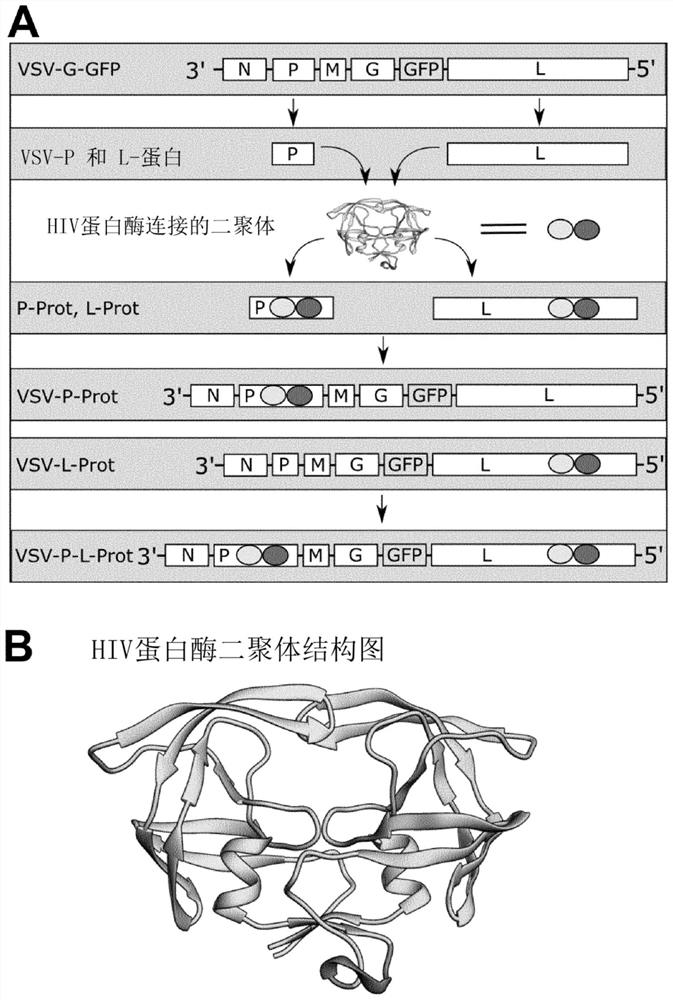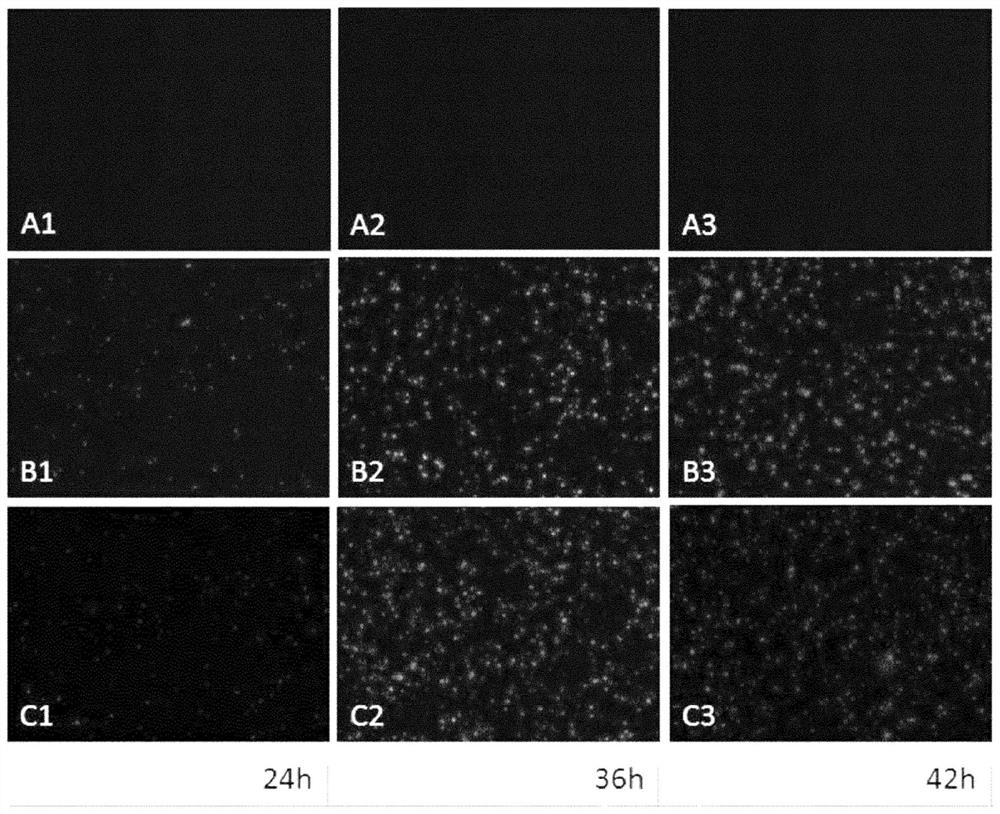Novel mechanism to control RNA virus replication and gene expression
A kind of RNA virus and virus technology, applied in the field of new mechanisms to control RNA virus replication and gene expression, can solve problems such as limited neurotoxicity and side effects
- Summary
- Abstract
- Description
- Claims
- Application Information
AI Technical Summary
Problems solved by technology
Method used
Image
Examples
Embodiment 1
[0235] Example 1: Generation of a protease-regulated ON switch, VSV-P-prot
[0236] To generate tunable switches to control the activity of RNA viruses, we developed a system that incorporates autocatalytically active protease sequences into genes essential for VSV gene expression and replication ( figure 1 a). In our first ON-switch construct, we introduced the HIV protease dimer into the cofactor of VSV polymerase, the P-protein (SEQ ID NO: 1), resulting in VSV-P-prot. It was previously shown that intramolecular insertion sites do not affect P protein function (Das et al., J Virol., 2006, 80(13):6368-6377). Dimerization is required for HIV protease function. To facilitate immediate post-translational proteolytic activity, gene insertion constructs were designed to contain two copies of the HIV protease (PR) linked by a flexible linker ( figure 1 b. 2) (Krausslich, PNAS, 1991, 88(8): 3213-3217). Flexible linkers (SEQ ID NO: 8 and 9) were also applied upstream and downstre...
Embodiment 2
[0239] Example 2: VSV-P-prot can be regulated in a dose-dependent manner and by various HIV protease inhibitors
[0240] To test whether the amprenavir-dependent activity of VSV-P-prot is generally applicable to other members of the HIV protease inhibitor class, BHK cells were treated with the second-generation compounds saquinavir (10 μM) and indinavir (10 μM ) were incubated together, and then infected with VSV-P-prot at an MOI of 0.01. Consistent with the amprenavir effect, both inhibitors promoted viral gene expression (GFP signaling) and viral replication (plaque formation) ( Figure 7 ), demonstrating the universal targeting of the HIV protease-based VSV ON switch system. Lopinavir (10 μM) and other HIV protease inhibitors were also shown to modulate VSV-P-prot (data not shown).
[0241] Amprenavir doses for virus production and initial studies were selected based on previously described APV plasma concentrations in APV orally treated patients (Sadler et al., Antimicro...
Embodiment 3
[0242] Example 3: VSV-Pprot lacks neurotoxicity and intracranial spread
[0243] It is well known that once VSV enters the CNS space, it can cause significant neurotoxicity in experimental animals. VSV glycoproteins display a strong affinity for neurons, and anterograde and retrograde axonal spread have been described. To determine to what extent VSV-P-prot abolished neurotoxicity compared to normal VSV, we employed direct stereotaxic injection into the striatum of mice. Intracranial infusion of wild-type VSV-dsRed (2x105TCID 50 , 2 μl) resulted in profound neurotoxic signs ( Figure 9 A), manifested by hindlimb paralysis, lack of coordination, hunched position, and severe weight loss within 2 days of injection ( Figure 9 C). For humane reasons, all mice must be euthanized within 4 days ( Figure 9B). In stark contrast, when VSV-P-prot was injected into the brain at the same dose, there were no signs of neurotoxicity. When treated simultaneously with amprenavir and rit...
PUM
 Login to View More
Login to View More Abstract
Description
Claims
Application Information
 Login to View More
Login to View More - R&D
- Intellectual Property
- Life Sciences
- Materials
- Tech Scout
- Unparalleled Data Quality
- Higher Quality Content
- 60% Fewer Hallucinations
Browse by: Latest US Patents, China's latest patents, Technical Efficacy Thesaurus, Application Domain, Technology Topic, Popular Technical Reports.
© 2025 PatSnap. All rights reserved.Legal|Privacy policy|Modern Slavery Act Transparency Statement|Sitemap|About US| Contact US: help@patsnap.com



